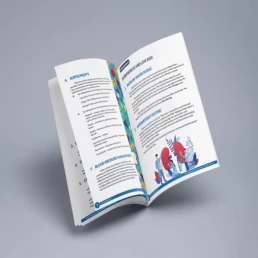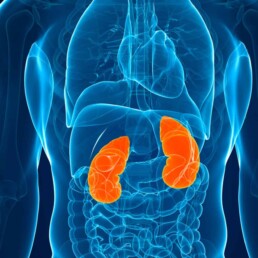The levels of blood sugar (glucose) are heavily regulated. When we eat carbohydrates (carbs), we break them down in the gut into simple sugars. These sugars all turn into glucose which circulates in the bloodstream. When glucose is absorbed into the bloodstream, the pancreas produces insulin. Glucose is used by various cells and organs as a major source of energy. In this blog, we will discuss the role of kidneys in sugar balance.
By Majd Isreb, MD, FACP, FASN, IFMCP
Glucose metabolism
Glucose metabolism is a very complex process. Books have been written about it. So, it will not be fair to cover it and understand it in a simple paragraph in this blog. However, it is useful to divide glucose metabolism into multiple processes:
- Glycolysis: This is the process of breaking down glucose to produce energy and other metabolic products. It usually occurs in the liver after eating carbs.
- Gluconeogenesis: In this process, the liver makes glucose from other substances such as fats and proteins after periods of fasting.
- Glycogenesis: Here, excess glucose is stored in the liver and muscle cells as glycogen.
- Glycogenolysis: During fasting, the liver and muscles can release stored glycogen into the bloodstream to maintain stable blood glucose levels.
Normally, glucose blood levels are tightly regulated. Insulin is produced by the pancreas after glucose is absorbed into the bloodstream. Insulin facilitates the entry of glucose into the cells. It also prompts the liver to store glucose in the form of glycogen. This is why it is crucial for regulating blood glucose levels. Insulin has many other roles such as protein building in the muscles.
During periods of fasting such as overnight sleep, the pancreas produces another hormone called glucagon which triggers the liver and muscles to release stored glycogen to maintain blood glucose levels. Other hormones involved in glucose regulation include cortisol, amylin, incretins, ghrelin, leptin, adiponectin, and growth hormone.
Traditionally, it has been thought that the liver and pancreas are the major organs involved in glucose regulation. The gut, fat, and muscle cells also play a role. However, little is known about the role of the kidneys in sugar balance.
The role of kidneys in sugar balance
Gluconeogenesis in the kidneys
Gluconeogenesis describes the process our body produces glucose from other precursors. This process is crucial for maintaining blood sugar balance in normal individuals. The liver is usually known to be the primary site for gluconeogenesis. However, recent data showed that the kidneys are also a significant site for gluconeogenesis.
After an overnight fast, in fact, the kidneys account for 40% of gluconeogenesis. Most of that is produced in the proximal tubules. The proximal tubules use lactate and amino acids to produce glucose. This process is regulated by insulin, blood acid level, and stress hormones.
Cortisol appears to increase the production of glucose by the kidneys. Epinephrine (the fight or flight hormone) also can increase glucose release by the kidneys. This effect was eliminated by renal denervation. Therefore, it appears that kidneys play an important role in maintaining glucose levels in critical illnesses or under stress.
Insulin, on the other hand, decreases the release of glucose by the kidneys. In addition, elevated blood and urine glucose was found to reduce glucose production in the proximal tubules. Finally, high blood acid level has been found to increase glucose production by the kidneys.
Interestingly, SGLT2 inhibitors which have recently gained popularity as medications that improve cardiac and renal outcomes increase gluconeogenesis in the kidneys.
The place for insulin degradation
Since we are talking about glucose balance, we should add that the kidneys are a significant site for insulin metabolism and clearance. The kidneys are responsible for 40% of insulin metabolism and clearance. In healthy individuals, the kidney clearance of insulin is 200 ml/min. This value is obviously greater than GFR. This is because the glomeruli filter insulin. The proximal tubules then reabsorb it. In addition, insulin enters the tubular cells directly from their surrounding blood vessels. Most of the insulin that enters proximal tubular cells directly or by reabsorption gets broken down and degraded.
The proximal tubules are responsible for 60% of insulin metabolism and clearance by the kidneys. This explains the decrease in insulin requirement in diabetic patients who develop advanced kidney disease. The loss of kidney function decreases the degradation of insulin. Therefore, more insulin will be available in the circulation. This is also why many diabetic patients with progressive kidney disease develop low blood sugar while on glucose-lowering medications.
The bottom line
The kidneys play an important role in maintaining blood glucose levels, especially during stress and critical illness. Patients with advanced kidney disease require less insulin to control their blood sugar levels because of the loss of the normal abilities of the kidneys to break down insulin.



